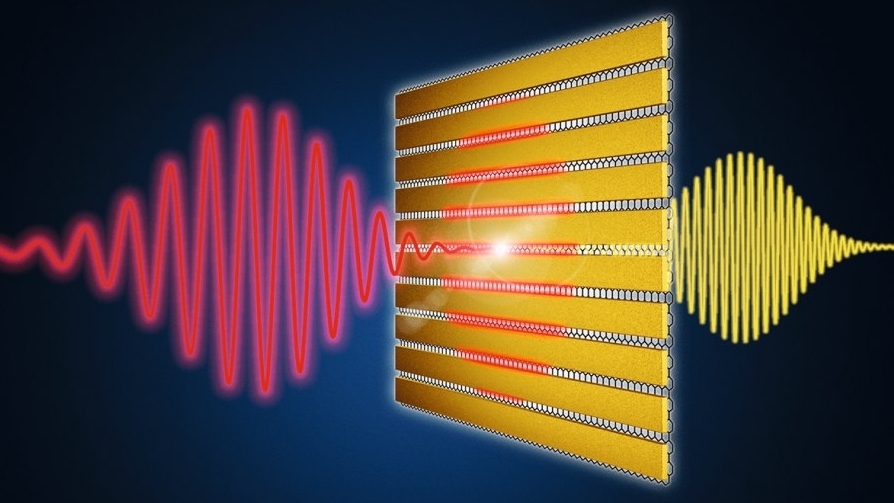A German-Spanish research team involving the Helmholtz-Zentrum Dresden-Rossendorf (HZDR) has developed a material system with which terahertz pulses can be generated much more effectively than before. It is based on graphene, i.e. super-flat carbon, which is coated with a metallic lamellar structure (gold).
The gold lamellae act like antennas that significantly amplify the incoming terahertz radiation in the graphene. As a result, very strong fields occur where the graphene peeks out between the lamellae, which ultimately makes the frequency conversion very efficient. To test the idea, the team members applied a single graphene layer to a glass substrate. They then vapor-deposited a wafer-thin insulating layer of aluminum oxide and then a grid of gold strips. The samples were then irradiated with light pulses in the low terahertz range (0.3 to 0.7 THz) at the TELBE terahertz facility in Rossendorf.
It was shown that, compared to untreated graphene, significantly weaker input signals are sufficient to generate a strong frequency-multiplied signal. This was possible up to a ninefold increase in the input frequency. The graphene-based metamaterial would also be compatible with current semiconductor technology; in principle, it could be integrated on standard chips. Possible applications range from mobile communications to industrial quality control or security scanners at airports to materials research.


